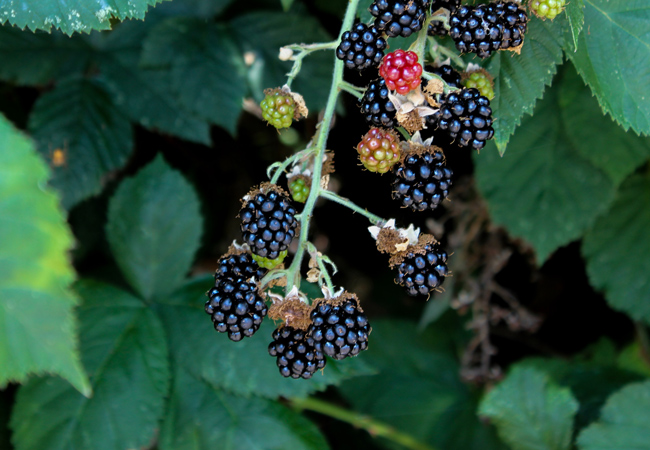
Research, Learning, and Networks
By Ric Coe, Director and Specialist in Research Methods, Statistics for Sustainable Development
I have spent my career helping agricultural, environmental, and rural development scientists with their research. The aim is always much the same: rigorous, dependable, unbiased results upon which people can act. But do we use the same approach when working on our own everyday problems?
Berries of the garden
I am not a farmer but do grow a lot of fruit and vegetables on the land we have. Recently I planted blackberries, which aren’t widely cultivated here in southern Finland. They grew well, flowered, and fruited, after which I wondered if I should cut their tips off as I do with raspberries, something I learned from my dad years ago.
The scientist’s approach would be straightforward: Review the literature to find out what’s known and its theoretical basis, then design a careful experiment, replicated and randomized with objective measurements, to see how it works in my context. That’s not quite what I did and not what many gardeners or farmers do.
I did a quick search of the literature but, not being a physiologist or horticultural scientist, couldn’t easily understand its relevance to my problem. I checked what the gardener chat and advisory websites had to say, which was mixed, muddled, and hard to figure out if the advice applied to my variety and climate. It looked as if the practice of “tipping” is often used, so I did my own casual experiment and cut the tips off my blackberries with no control treatment, no formal measurements, no randomization. Next year I will find out if production is better.

Reflecting on my efforts to learn about growing blackberries:
- I tried to use the scientific literature but it would have been better had a suitable scientist been engaged so we could talk it though and I could understand it.
- I used the informal knowledge I already had and hoped it was relevant.
- I referred to gardener networks but only read some websites. Some two-way exchanges would have been better.
- I did a simple experiment that will produce only one observation in one season. Had others also been trying it, we might all learn faster.
What I really need is a network of other gardeners who know and interact with each other, preferably from my neighborhood. I need the right sort of scientists engaged in that network who can bring in technical knowledge and explain the science. Then, if everyone in the network who’s interested in growing blackberries experimented together, we should make rapid progress. Such is the farmer research network (FRN) concept the CCRP has been introducing in the 12 countries in which the program works.
Various ways exist for characterizing and justifying FRNs, and some principles underlying the idea have been put forward and evaluated. If we look at FRNs as bringing together the three domains—everyday learning, research and science, social exchange and networking—the reasons they can be so effective become clear as do ways in which they can be encouraged or supported.
Farmers, like everyone else, continually learn by trying things out and observing what happens. Seen like that, “research” is not only something done by experts in special facilities but a natural progression from what farmers are doing anyway. Bringing a scientist into the FRN adds at least two things:
First, the right scientist can ask useful questions and interpret observations through their knowledge of processes that are invisible to farmers. For example, farmers can observe that soil with high organic matter is moister and more productive. Scientists can explain what’s going on in terms of soil biota, nutrient cycling, and moisture holding capacity.
Second, a scientist can help farmers make valid and useful observations by using, for example, a simple, field-based method of measuring soil organic matter and using the principles of research design to make sure the results are objective. Social exchange is part of everyone’s life so why not build research around it? Not only is it natural to tackle problems collectively, it makes sense practically and both ideas and observations get pooled. A group of farmers and others pooling ideas will make faster progress than individuals. Many simple observations made on different farms can, in the right circumstances, generate complex insights and results applicable across large areas.
We recently published findings from an investigation into experiences with FRNs. The overall conclusion is that FRNs really can help farmers learn about and solve problems while at the same time generating valid research results. Thinking of FRNs as a blending of formal research and informal learning approaches may make that unsurprising and could be the basis for repeating the idea more widely.
I need to find and join a network of organic gardeners in my area. Maybe they already know how to prune blackberries and, if not, we can jointly do an in-garden experiment.
Paper referenced:
Richardson, M., Coe, R., Descheemaeker, K., Haussmann, B., Wellard, K., Moore, M., Maland Cady, J., Gubbels, P., Tchuwa, F., Paz Y, R., and Nelson, R., Farmer Research Networks in Principle and Practice, International Journal of Agricultural Sustainability, DOI: 10.1080/14735903.2021.1930954 (2021)
Date:
10/24/2021